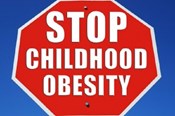September marks the start of National Childhood Obesity Awareness Month.
In the past four decades, obesity rates in the United States have soared among all age groups. This rise in obesity rates has affected our youth in alarming fashion. Childhood obesity has increased more than fourfold among those ages 6 to 11. More than 23 million children and teenagers in the United States ages 2 to 19 are obese or overweight, a statistic that health and medical experts consider an epidemic. And this epidemic puts nearly one third of America’s children at early risk for Type 2 diabetes, high blood pressure, heart disease and even stroke – conditions usually associated with adulthood. Even greater disparities exist among young Hispanics and children of color.
According to the 2008 Physical Activity Guidelines for Americans, children and adolescents aged 6–17 years should spend 60 minutes or more being physical active each day. The Dietary Guidelines for Americans, 2010, provide nutritional guidance for Americans to promote good health, reduce the risk of chronic diseases, and reduce the prevalence of overweight and obesity. The guidelines recommend balancing calories with physical activity, and encourage Americans to consume more healthy foods like vegetables, fruits, whole grains, fat-free and low-fat dairy products, and seafood, and to consume less sodium, saturated and trans fats, added sugars, and refined grains.
Every person in the U.S. can be an important part of Childhood Obesity Awareness Month by taking small steps that add up to a big difference: Eating more balanced meals and snacks, engaging in physical activity more regularly, and sharing your personal plan and commitment with family and friends of all ages.







